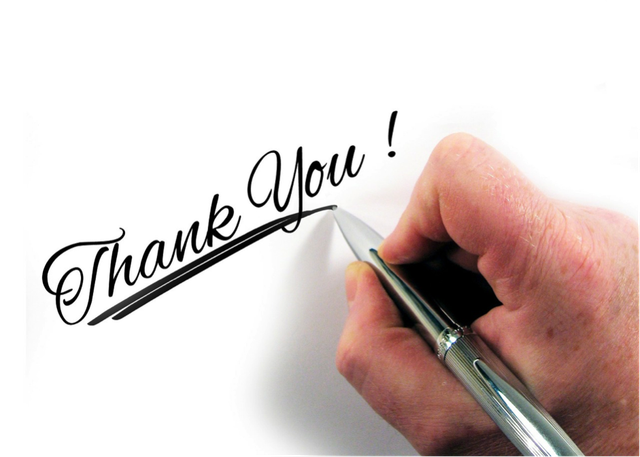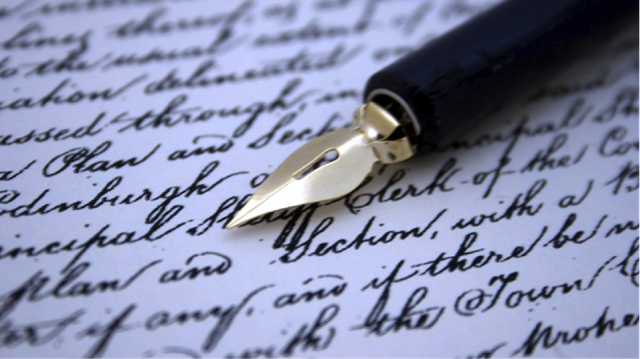How thank-you letters can help you achieve your major giving potential
- Written by
- Ikhlaq Hussain
- Added
- April 27, 2017

There seems to be an outburst of appreciation for thank-you letters or notes. Rightly so, because they give a completely different feeling and satisfaction than thank-you emails. In the digital age donors are constantly being bombarded with emails so if yours is fortunate enough to be opened, not blocked as spam, often it is simply read and then deleted. Thank-you letters and notes, however, tend to be opened, read and placed on the counter, on the desk, or perhaps even attached to the refrigerator with a magnet.
As fundraisers, we all aim to be remembered rather than deleted by our donors. The thank-you letter effectively serves as a timely reminder of you every time the recipient sees it. They are a cost-effective way of building trust and rapport between charities and their major donors.
The first thank-you letter or note is particularly important because you are still at the early stage of figuring out what led this individual to donate to your cause. You might not have any immediate results that you can send back in response to her or his gift, to show how her money is achieving what she wants it to do. That first letter, however, will tell a lot about your organisation’s culture, attitude and how much you care for your top contributors.
We receive a lot of advice on what to include in a thank-you letter to major donors, but the format of the letter is still not talked about enough and its benefits are often overlooked. You can have carefully written amazing content within the letter but a thank-you letter is at its best when the overall presentation has an extra touch of quality. If it fails to stand out in appearance it might just land in the bin or receive only a cursory glance. Therefore your thank-you letter, or note, must be attractive enough from the very beginning to encourage donors to open it and, even more importantly, read it.
I have always found the five points I have listed below work for me when it comes to sending thank-you letters and notes to major donors.
1. It's not what you say, but how you say it
We have all most likely heard the phrase: it’s not what you say, but how you say it. According to Professor Albert Mehrabian (Professor Emeritus of Psychology, UCLA) the famous phrase means that in effective communication only seven per cent of the meaning lies in our words, with thirty-eight per cent in the way that our words are said and fifty-five per cent of the meaning in our body language whilst we say it. We know this applies to spoken communication, but if we twist this and apply the same rule to sending thank-you letters to our major donors, fifty-five per cent of effectively communicating in our letters should be in how we present them.
Small touches in a thank-you letter can go a long way – whether in the type of paper used, font style and colour, handwritten elements, envelope type, even the stamp used. All of these finer details will make your letter appear more exclusive and increase your chances of receiving greater attention from your major donors. I explain these in further detail below.

Personal touches
If you have only a few thank-you letters to send out, why not write them by hand? I normally do this for my top 50 donors. If not, at least write a note on the side of the typed letter and write the top and tail – making sure that the name and address on the envelope is handwritten too. It is an unexpected pleasant treat for your donors and adds a personal touch adding to the feeling of exclusivity that the letter they received has solely been sent to them
Ink colour
Use black or blue ink and no other colour; it is simple yet maintains class and professionalism.
Legibility
Your handwriting doesn't have to be great, just make sure your message is clear, legible and big enough in size to read. If writing by hand isn’t your strongest point, you can always ask a team member for help.

Packaging
Always use close-faced envelopes when sending thank-you letters and notes. Even if you decide not to do this, be sure never to use white no.10 outer envelopes as they look too official and remove the personal feeling you want to convey.
Postage
Always use a first-class stamp when writing to your major donors because this emphasises the urgency and importance of the letter.
2. Opportunity versus obligation
As fundraisers, we may be justified in thinking that thanking our donors is an obligation. But I believe we need to aim beyond that and view thanking our major donors as an opportunity. An obligation is something that you are morally bound to do as it is the ‘right thing’. But if we take thank-you letters and notes as an opportunity they become a way to build relationships by showing the appropriate appreciation to the right person at the right time.
Treating the thank-you letter as an opportunity may potentially reap two-fold benefits. Firstly, you are increasing your chances to receive another and potentially bigger gift from your donor in future. Many a time major donors give their first gift as a ‘toe-dipping’ gift – where they test the response of the charity before unlocking the full potential of their capacity to give.
Secondly, once your major donors are happy they may share their experience with family and friends, which could mean more exposure for your charity, as well as donations in future. Thus the first thank-you letters are a more cost-effective way to build a deeper emotional relationship with your donors; fundraisers must ensure that we do all we can to maximise this opportunity.
3. Be creative
Being creative does not mean that you have to spend a lot of time brainstorming ideas on sending thank-you letters. However, the more creative you become at sending letters, the more appreciative donors become. It could be simple touches that illustrate how much you appreciate your major donors. For instance, the letter or thank-you note does not have to come from you, it can be from someone who is higher up in your organisation such as a trustee, patron, or CEO. This can be done by segmenting your donors where the size of the gift can determine who makes the thank you. This does not at all mean major gifts managers should not be sending thank-you letters; the entire thank you experience can be split between the major gifts managers and leadership of the organisation. For example, staff in direct contact with major donors can say thank you over the phone and the written letter can be sent from the leadership, allowing the fundraisers to use this opportunity to build a strong rapport with major donors.
4. Time your thank you

How quickly thank-you letters should be sent is a question that crops up time and time again. At my current organisation we send them to our major donors within 48 hours and follow up with a phone call.
One rule does not fit all, so you can do this by segmenting your donors and create appropriate timelines accordingly for each group. For example, anyone donating over £10,000 will receive a call within 48 hours. However, delaying your acknowledgement may leave your donors wondering if their gift has been received or the recipient is just unappreciative. Thus, speed when sending a thank you is of utmost importance.
5. No to pre-paid reply envelopes
As a major donors practitioner, I never send a stamped reply envelope in the first thank-you letter for two reasons. Firstly, I do not want them to think that the free envelope is a signal that I am asking for another gift. Secondly, someone who donates large sums is hardly going to be unable to buy a small envelope and a stamp.
Acknowledging the major donors’ gifts doesn’t need large teams and big budgets, it can be done in organisations of any size. The key to building effective relationships and unlocking great stewardship lies in a little creativity. From written content to overall presentation, it’s high time that fundraisers invested more in the finer details when writing thank-you letters and notes, which can go a long way to impress your major donors and show them that their support is recognised and appreciated.
A well thought-out first letter could be the best first step you can take towards building rapport with your major donors over a short period of time and be a simple and effective tool to unlock the full potential of your major donors.

















